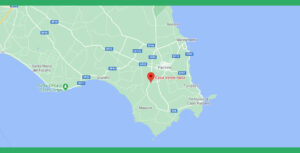Virus resistance mediated by coat protein

The impact of “coat protein-mediated resistance to viruses” in applied plant pathology and basic research.
All over the world, plant viruses cause serious reductions in production yield and in some cases even the death of the plant. The development of virus-resistant crops through traditional breeding can take many years and in some cases it is not even possible.
This topic highlights the significant changes made to research on basic plant pathology and applied to commercial food production accumulated over the past 30 years.
In the current period, the attention paid to the problem of virus infections is even greater, following the widespread epidemics in Sicily: of TYLCV, TSWV, TOBRFV and ToLCNDV on tomato and courgette plants that are decimating production.
It is of fundamental importance to pay attention to the hygienic and sanitary conditions to be respected in the cultivation environments, to avoid the proliferation of vectors and ensure the immediate elimination of infected plants.content_copyshare
Keeping the vectors at bay is necessary to limit the propagation of viruses, the insects most responsible for this spread are the whiteflies, specifically Bemisia Tabaci also known as the whitefly of the gardens.
Over time, humans have developed a number of approaches and technical strategies to address the problem of plant virus diseases. The strategies available to growers included good sanitation practices, plant varieties for resistance, chemical control of insect vectors, and occasionally, cross-virus protection.
For virus control the most used strategy is a combination of sanitation and the growth of genetically resistant plants to viruses. Virus resistance genes may exhibit recessive, additive or dominant inheritance patterns… Growers often try to limit the spread of the virus by chemical control of vector insects (aphids, whiteflies).
For example, aphids transmit non-persistently for a few seconds, so they can spread the virus before the insecticide can kill them, making control strategies useless.
Another strategy is cross-protection, it was found that plants already infected with one strain of TMV were resistant to infection with a second closely related strain of TMV. Cross-protection could have practical applications for the control of virus diseases in agriculture. If a plant could be inoculated for the first time with a mild strain of a virus, the plant will be able to withstand the attack of a more serious strain. The greatest use of cross-resistance was that of citrus fruits from CTV infection but also on PRSV on papaya and on ZYMV on courgette. The main limitation of this strategy is that effective naturally occurring virus resistance genes are often difficult to find, manage in a breeding program, and in some cases unavailable.content_copyshare
Resistance by Coat-protein
In 1985, Sanford and Johnston published the concept of parasite-derived resistance by cloning the appropriate parasite gene by modifying its expression if necessary and transforming it into the host genome.
When the gene is expressed in the host, this could produce incorrect signals that could interfere with the parasite’s normal replication and infection cycle. This dysfunction could therefore lead to a resistance phenotype. This concept was particularly interesting as a resistance strategy for plant viruses for several reasons.
First, all plant viruses regardless of their taxonomic group are all obligate intracellular parasites, so this approach could be applied to any virus. Then, most plant viruses have fewer than 10 genes, so this strategy could be experimented with by experimenting with only a few genes. Ultimately, the strategy could be applied without detailed knowledge of all the functions of a virus gene or protein.
In 1986, the first genetic virus resistance experiment was reported demonstrating resistance to TMV in transgenic tobacco plants designed to express the TMV coat protein gene. At the time, the hypothesis was that the proteins encoded by the virus were probably decisive for the phenomenon of transverse (cross) protection. They found that CP plants reacted differently to non-transgenic tobacco plants. CP plants showed greater resistance to TMV infection.
Some plant species showed a lower percentage of TMV-infected plants compared to non-transgenic controls and those that became infected developed symptoms after inoculation compared to non-transgenic plants. By increasing the inoculum level, the delay in onset of symptoms was reduced.
The CRPM “capsid-mediated protein resistance” was tested on viruses of at least five other taxa. There was a delay in symptom onset and / or a reduction in symptom severity. Multiple transgenic plant lines were generated expressing the CP of CMV from a transgene. Some potato plants designed to express the PVY CP potato virus from a transgene were found to be resistant to the PVY challenge.
Basic research on PDR
Although CPMR has been tested with viruses from different taxa, our understanding of the mechanisms underlying CPMR has been most influenced by the engineering study of viral resistance to tobamovirus or potyvirsu.
The accumulated results over the past 30 years have suggested that how CPMR works depends in part on the viral system and the particular transgenic plant being analyzed. The expressed CP transgene appears to be required for resistance.
However, in most of the examples the resistance mechanism does not involve a viral protein at all, but is instead an RNA-mediated phenomenon.
These reproductive experiments clearly demonstrated that effective viral resistance could be obtained in the absence of any viral protein and therefore must be mediated by RNA. These observations were the basis for further research.
agricoltura coat protein pomodoro TOBRFV ToLCNDV TSWV TYLCV virus piante zucchino


